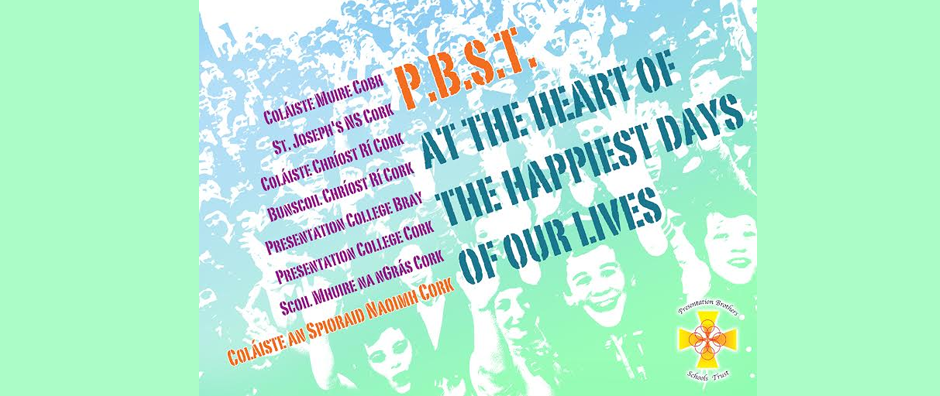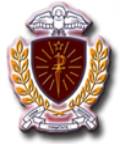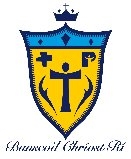Edmund Rice
Edmund Rice was born at Westcourt in the parish of Callan, Co. Kilkenny, on 1 June 1762. The Penal Laws, which had been framed in 1704 to keep in check the Catholic population, had been relaxed somewhat and a minority of enterprising Catholics were able to improve their position. Edmund’s father, Robert, worked a 180-acre farm leased from Lord Desart.
Edmund attended a hedge school, an illegal pay-school set up by a travelling teacher. The religious education he received in the family home was augmented by lessons from an Augustinian travelling friar, Fr. Patrick Grace. Later, more fortunate than many of his contemporaries, he attended a commercial academy in Kilkenny city where he received a practical and classical education.
When he was 18 years old, Edmund became an apprentice in the business of his uncle, Michael Rice, a well-established victualler and ship’s chandler in the thriving port of Waterford.
Michael’s own sons were not keen to follow in their father’s footsteps, and such was his uncle’s confidence in Edmund that he signed over the flourishing business to him when Edmund was 24. At this time the laws, which had made it so difficult for Catholics to own property, were more relaxed and Edmund was able to invest in land and property.
Marriage
Edmund married Mary Elliot, daughter of a leather merchant, in 1785. Four years after they married, Mary gave birth prematurely to a daughter but died later. The baby, also named Mary, suffered a disability. .
Edmund, an avid reader of the Bible, often referred to this period of his life saying ‘The Lord gave and the Lord taketh away, so blessed be his name forever.’ (Job 1: 21)
Faith and Good Works
Edmund’s stepsister Joan came to Waterford to care for Mary and to keep house and Edmund continued with his successful business career. His religious life intensified. He went to Mass before work each day and in the evenings read spiritual books, especially the Bible and the works of St. Teresa of Avila.
Like many of the Catholic merchants of the time he lent money to poorer Catholics. He visited the poor in their homes and arranged the release of debtors from prison. His prison visits brought him in contact with unfortunates under sentence of death, and he was known to comfort them by his presence and his prayers at the scaffold near John’s Bridge.
At one time Edmund considered becoming an Augustinian friar, like his brother John. But in 1797 when Bishop Hussey of Waterford wrote a pastoral letter castigating Catholic parents who put their children’s faith at risk by sending them to Protestant proselytising schools, Edmund could see that poor parents had no opportunity of educating their children except in such schools.
‘Who will ever measure all the good that has come from the spiritual insight,
warm heart and determined faith of Blessed Edmund Ignatius Rice?’
Pope John Paul II on the day of Edmund Rice’s beatification in Rome, October 6, 1996
Influence of the Presentation Sisters
In 1798 Presentation Sisters came to Waterford, and Edmund, at the request of Bishop Hussey and of his friend Fr. Power, helped the Sisters establish themselves in the city. The example of the Sisters in educating the local girls and the need for similar education for the boys convinced Edmund that he should commit himself to this work.
In 1800, with a few volunteer helpers, he began to teach some street children in the evenings at his stores in Barronstrand Street. Later he rented livery stables and converted them into classrooms. He made financial arrangements for his daughter Mary to be taken care of by close relatives and began to wind up his considerable business interests, intending to dedicate his life to God through Christian education.
He hired two assistants but they couldn’t cope with the unruly boys of the streets and they left. Neighbours resented having young delinquents in their locality and complained; his business friends were sceptical of a project that appeared to them eccentric and pathetic.
The Monks of the Presentation
Early in 1802 two young men from Edmund’s native Callan, Patrick Finn and Thomas Grosvenor, who had also been thinking of dedicating their lives to God, joined him. They began a form of community life, attending Mass daily, teaching all day and spending time in prayer and spiritual reading before retiring for the night. Their home was the loft over the stables in New Street.
In 1803 Edmund and his companions moved to Mount Sion, a monastery and school that he built on a hill overlooking the city. Here ‘the monks’, as Edmund and his companions were called, taught up to 150 pupils each, assisted by the brighter pupils in a monitor system. They also held night classes for illiterate adults. Edmund built a small bakehouse to provide a daily meal for the pupils, with a loft overhead in which tailors made clothes for them.
He continued his jail visits and his personal involvement in several charitable works. Protestants, especially Quakers, appreciated his efforts and became his benefactors.
Religious Profession
In 1808 Edmund had nine companions. His friend, John Power, was now Bishop of Waterford and he and Edmund drew up a rule of life based on the Constitutions of the Presentation Sisters. On 15 August Edmund and six others took vows of poverty, chastity and obedience, officially becoming a Diocesan Congregation of Brothers, under the authority of the bishop. They were known as the ‘Monks of the Presentation’.
General Chapter 1822
The Brothers had already established two foundations outside of Waterford city, at Carrick-on-Suir and Dungarvan, and Bishops in other dioceses began to request them to set up communities. By 1821 there were communities in five dioceses: Waterford, Cork,
Dublin, Cashel and Limerick. This was encouraging but also caused a problem: when communities were established, Bishops were reluctant to release Brothers to go to another diocese to found a new community. Amalgamating all the communities under a Superior General was the solution and approval for this arrangement was granted by Pope Pius VII in 1821. In January 1822 the Brothers elected Edmund Rice as their Superior General, becoming a Pontifical Congregation. They compiled a new Rule and renamed their Congregation the Christian Brothers.
A further difficulty
Bishop Murphy of Cork would not allow the Brothers at the North Monastery in his diocese to make this change, but they slipped away one by one to Waterford and made their vows under the new formula. However, one Brother accepted the Bishop’s direction. . Br. Augustine Riordan moved to the South Monastery where he continued to live according to the old rule. He was joined by a few companions and the little community continued as a Diocesan Congregation, the Presentation Brothers, until they also became a Pontifical Congregation in 1889.
Both the Christian Brothers and the Presentation Brothers prospered and membership increased though the two congregations remained technically illegal. Even when the Catholic Emancipation Act was passed in 1829, a penal clause was inserted to make provision for the ‘gradual suppression and final prohibition’ of male religious orders.
The penalty for any new member who joined could be transportation for life to the penal colonies of Australia. Edmund worried greatly that the men who had entrusted their lives to him by joining the congregation were facing a very uncertain future, but in practice, the new law was not enforced. In 1838 at the age of 76 Edmund resigned as Superior General. He lived to see Brothers depart to set up communities in Gibraltar, USA, England and Australia, but the years of carrying a heavy burden of responsibility took their toll. He gradually became an invalid and towards the end of his life he was confined to his room.
Edmund Rice died on 29 August 1844 at Mount Sion. On 6 October 1996 Pope John Paul II declared Edmund Blessed, the final step in the process that may lead to his canonisation.











